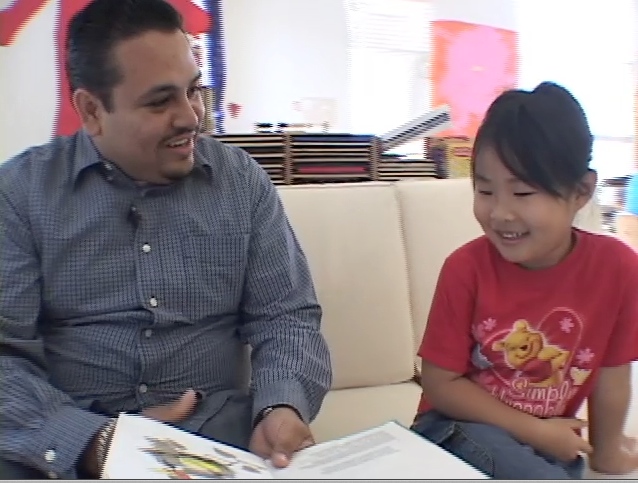Dec
9
Videatives Views Issue #204 English, Spanish, and Chinese Too!
 Jenny, a young dual language learner, who speaks Chinese and English, asks her teacher to read a book. Watch the gentleness and respect the teacher offers Jenny as he suggests that she can teach him Chinese and how he officially agrees she is in charge of pages when they read the Spanish version of the popular book, “Are you my mother?” by P.D. Eastman. You can see how comfortable Jenny is with the teacher as she jokingly says, “I’m not your mother.” She plays with the way a sentence can be a book title question – “Are you my mother?” or a real question in an immediate context. Research supports that dual language learners have a level of meta-linguistic awareness, such as puns or reframing the context of a sentence. Dual language learners also develop a keen ear for phonetic distinctions and the ability to pronounce these differences with skill. Listen to Jenny pronounce Spanish at various points in the book. Her inflections pick up the nuance she hears the teacher speak.
Jenny, a young dual language learner, who speaks Chinese and English, asks her teacher to read a book. Watch the gentleness and respect the teacher offers Jenny as he suggests that she can teach him Chinese and how he officially agrees she is in charge of pages when they read the Spanish version of the popular book, “Are you my mother?” by P.D. Eastman. You can see how comfortable Jenny is with the teacher as she jokingly says, “I’m not your mother.” She plays with the way a sentence can be a book title question – “Are you my mother?” or a real question in an immediate context. Research supports that dual language learners have a level of meta-linguistic awareness, such as puns or reframing the context of a sentence. Dual language learners also develop a keen ear for phonetic distinctions and the ability to pronounce these differences with skill. Listen to Jenny pronounce Spanish at various points in the book. Her inflections pick up the nuance she hears the teacher speak.
She also has an awareness of the quantity of Spanish that she knows, “I only know how to speak a little bit Spanish (01:54).” When a child speaks only one language we seldom hear such reflections, as in, “I know how to speak a lot of English.” This comparative view of language as a body of knowledge helps children define the boundaries and unique structure of a new language.
The teacher again establishes a type of peer relation with Jenny by admitting he knows only a little Chinese, so they can teach each other Spanish and Chinese respectively. At 02:15 Jenny repeats a new word in Spanish, apparently with delight in its rhythm and pronunciation. And when Jenny discovers that one says “mama” the same way in Spanish and Chinese, she explains that such overlap is not at all common (02:44). What a joy to read to a child so happy and capable of learning a new language.


